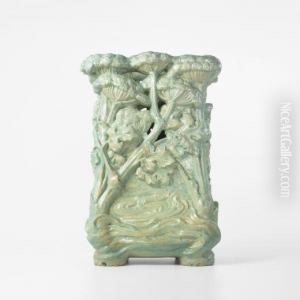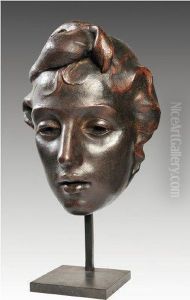Emile Muller Paintings
Émile Muller was a French ceramist and entrepreneur, born in 1823 in Paris, France, and who passed away in 1889. He played a pivotal role in the development of ceramic arts during the 19th century, particularly through his work at the Grande Tuilerie in Ivry-sur-Seine, which he took over in 1854. Muller was not just a ceramist; he was an innovator who combined artistry with industrial processes, significantly impacting the field of architectural ceramics.
Muller's work is characterized by the use of enameled terra cotta, which allowed for vibrant colors and intricate designs that were durable and resistant to the elements. His company, originally named Muller & Cie but later known as Emile Muller & Cie, became renowned for its contributions to architectural ceramics, producing tiles, façades, and ornamental features that adorned many buildings in France and abroad. Notable among his innovations was the development of the 'email ombrant,' a technique that allowed for the creation of shaded effects on ceramics, enhancing their three-dimensional appearance.
Throughout his career, Émile Muller collaborated with architects and artists, contributing to the aesthetic of the urban landscape during a period of significant transformation. His firm was involved in the construction and decoration of notable buildings, including parts of the Trocadéro for the 1878 Exposition Universelle in Paris, and numerous other projects that showcased the potential of ceramics as both a structural and decorative material.
Muller's legacy extends beyond his contributions to architectural ceramics; he was also involved in the art pottery movement, creating pieces that were admired for their artistic quality as much as their technical innovation. His works were exhibited in various international expositions, where they received critical acclaim and awards, further establishing his reputation as a leader in the field.
After his death in 1889, the company continued under the leadership of his descendants, maintaining the high standards of quality and innovation established by its founder. Today, Émile Muller is remembered as a pioneer in the field of ceramics, whose work bridged the gap between industrial production and artistic creation, leaving a lasting impact on the visual landscape of the 19th century and beyond.



